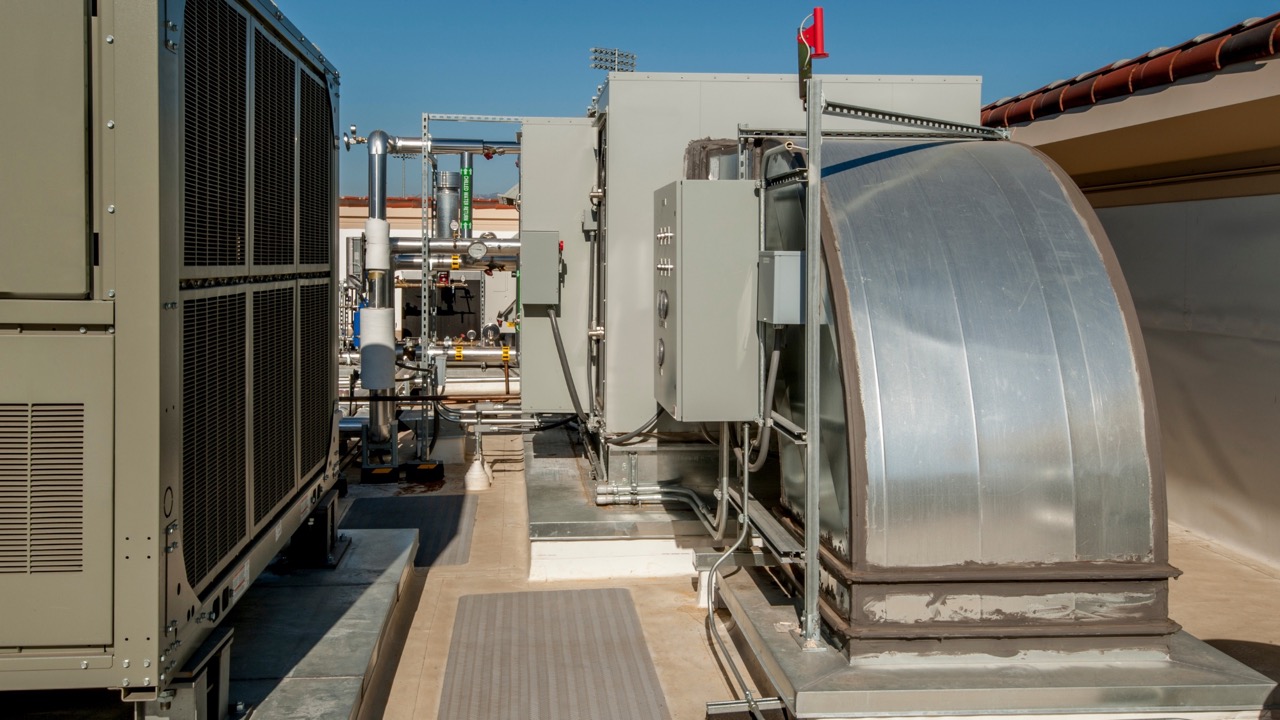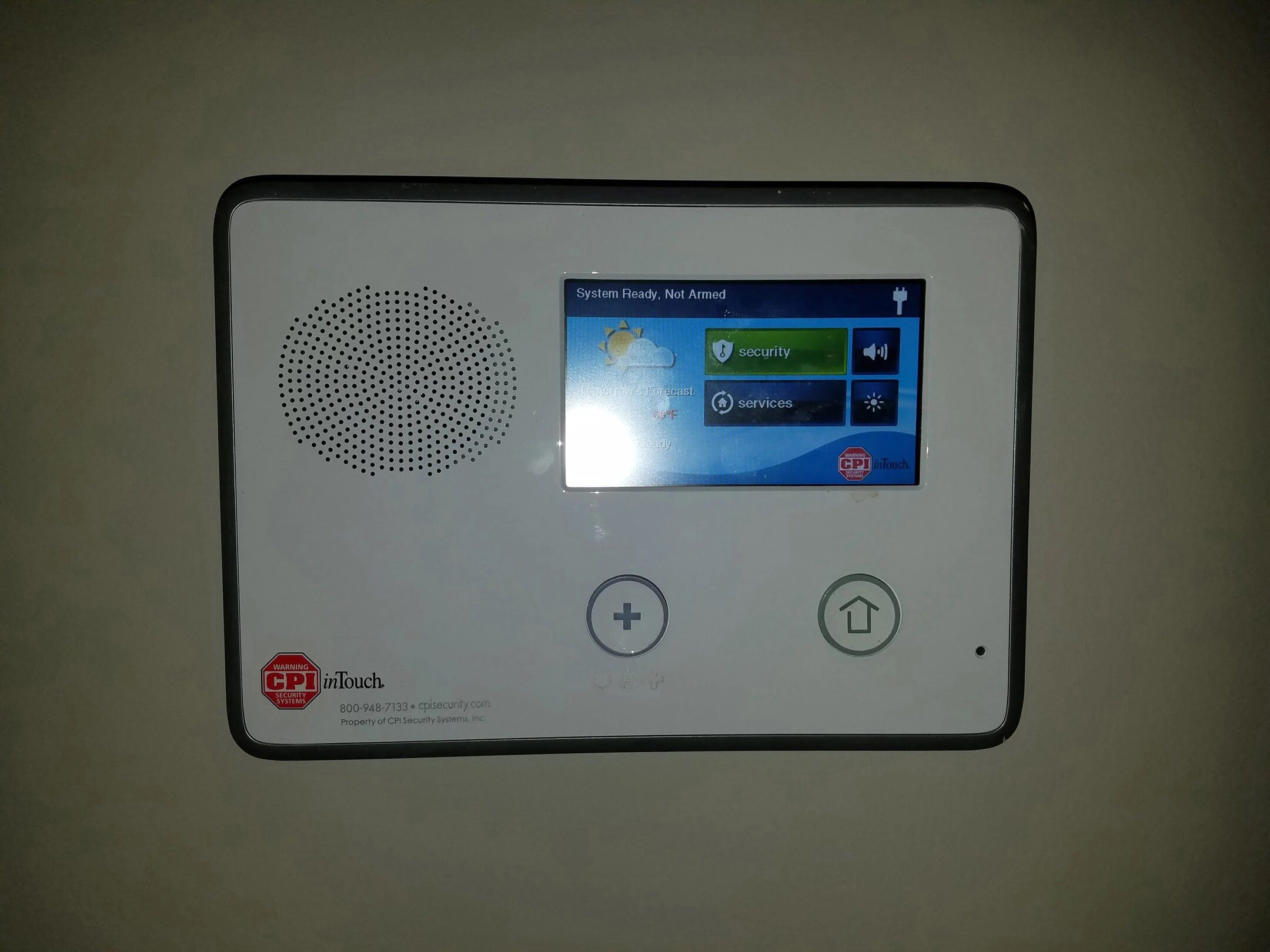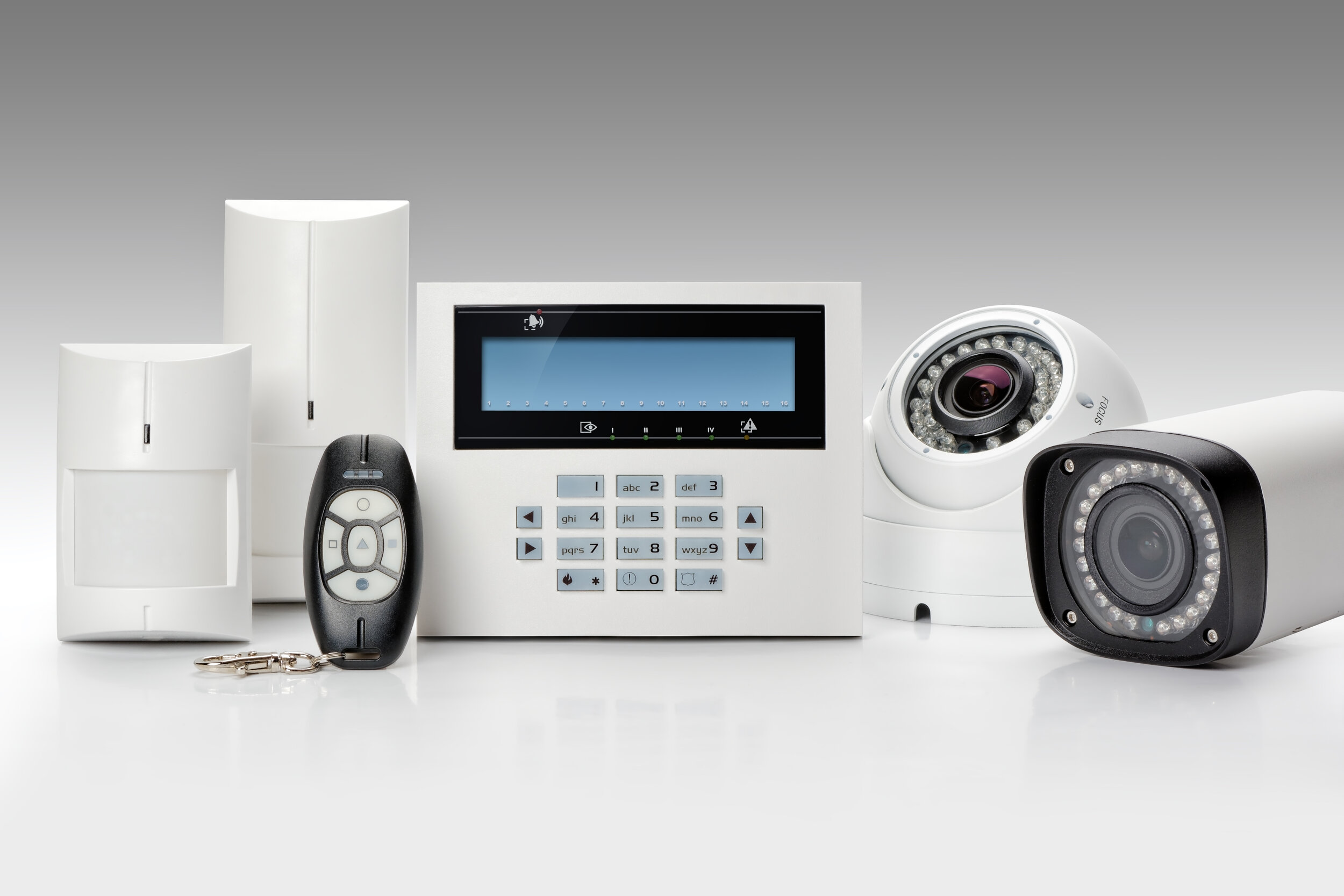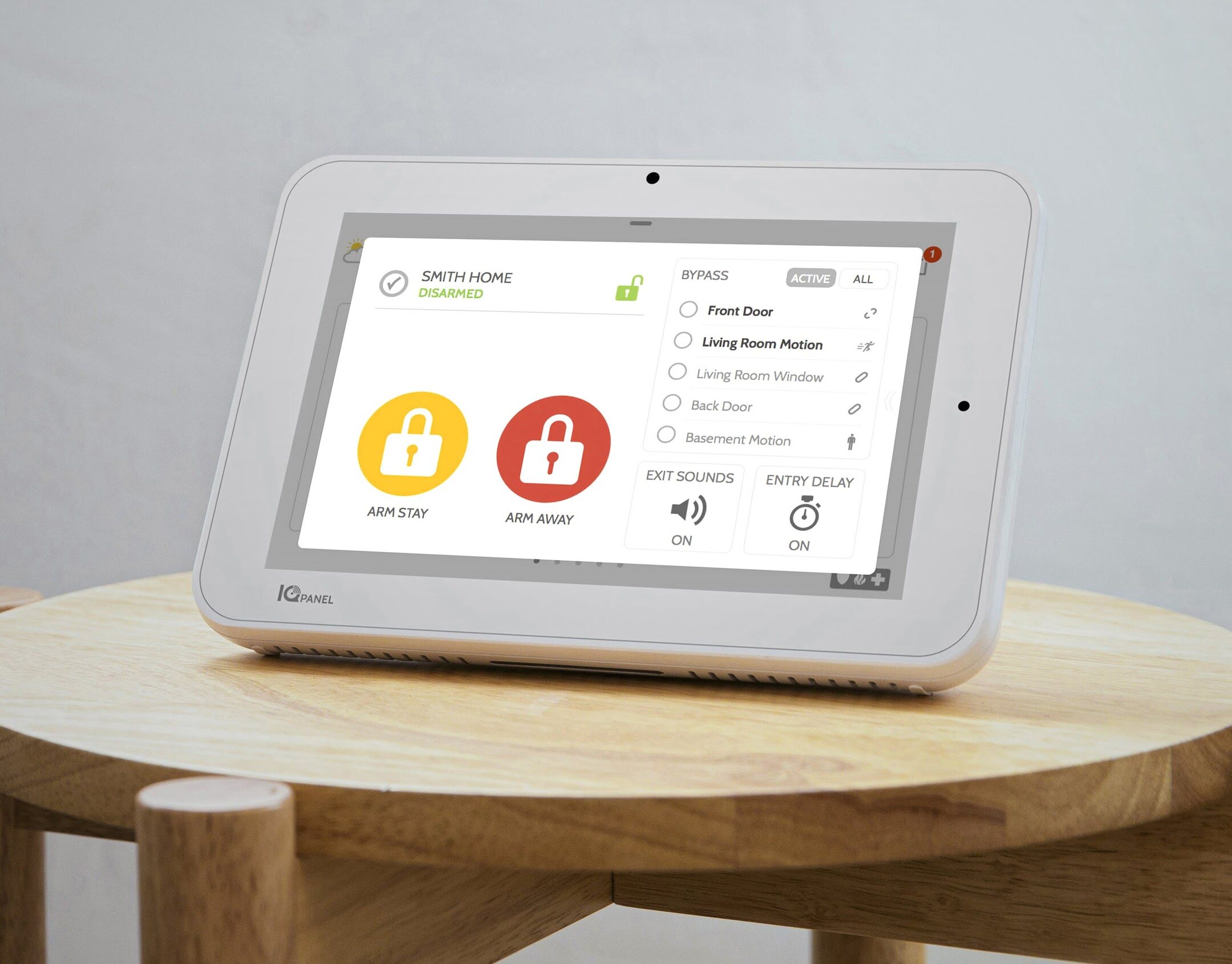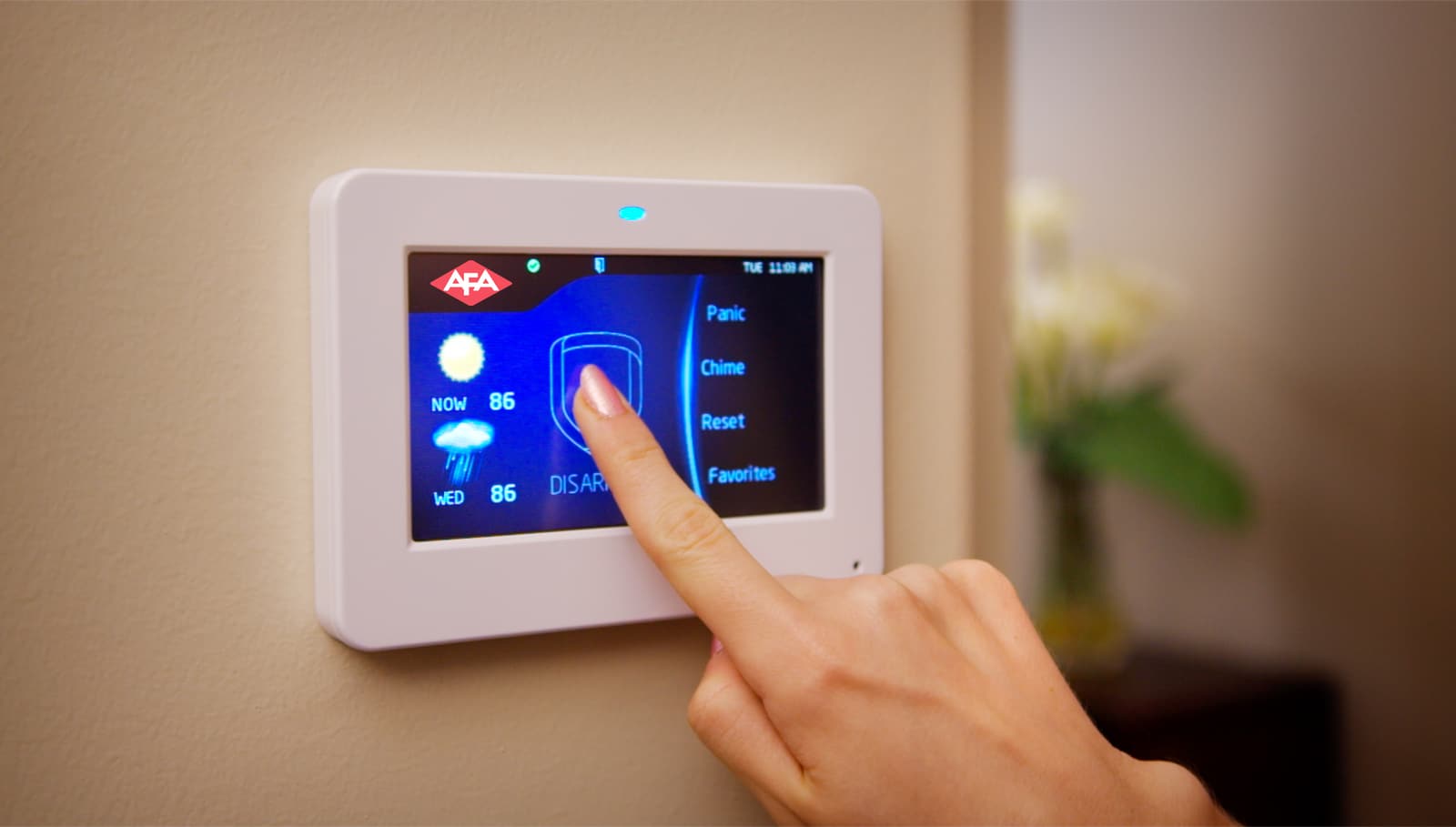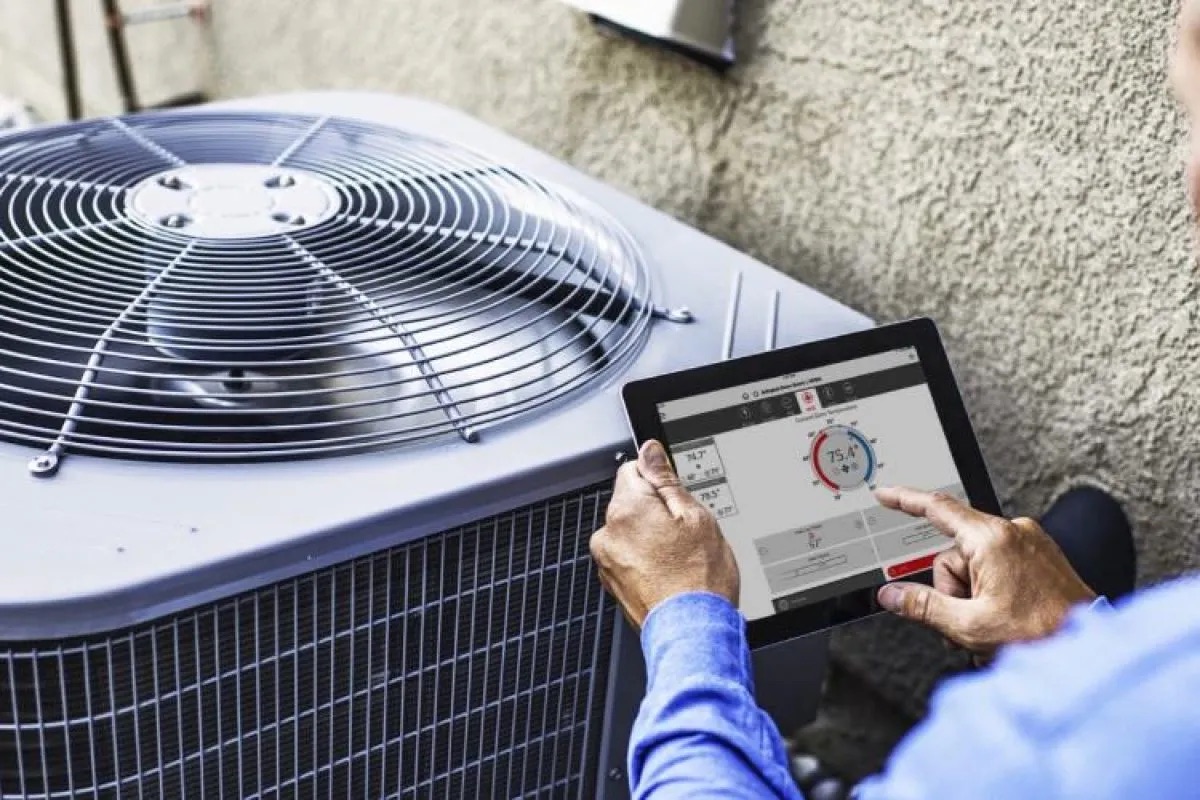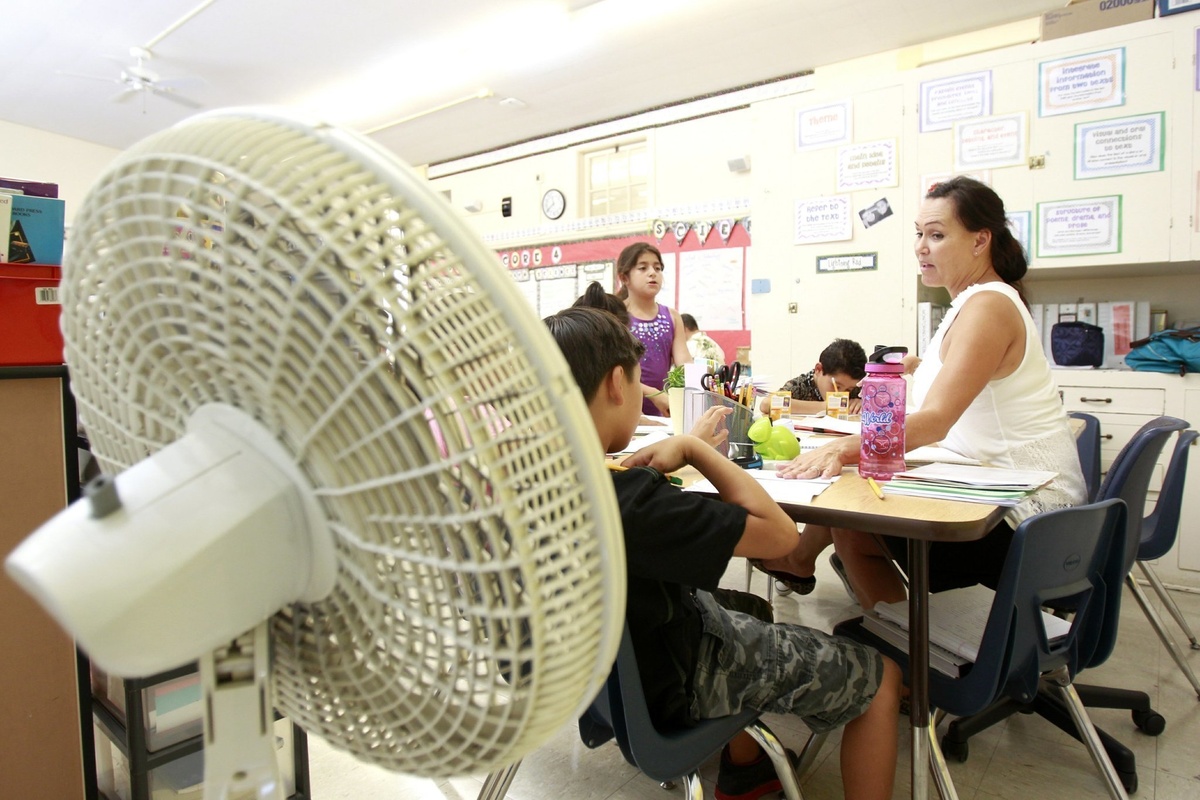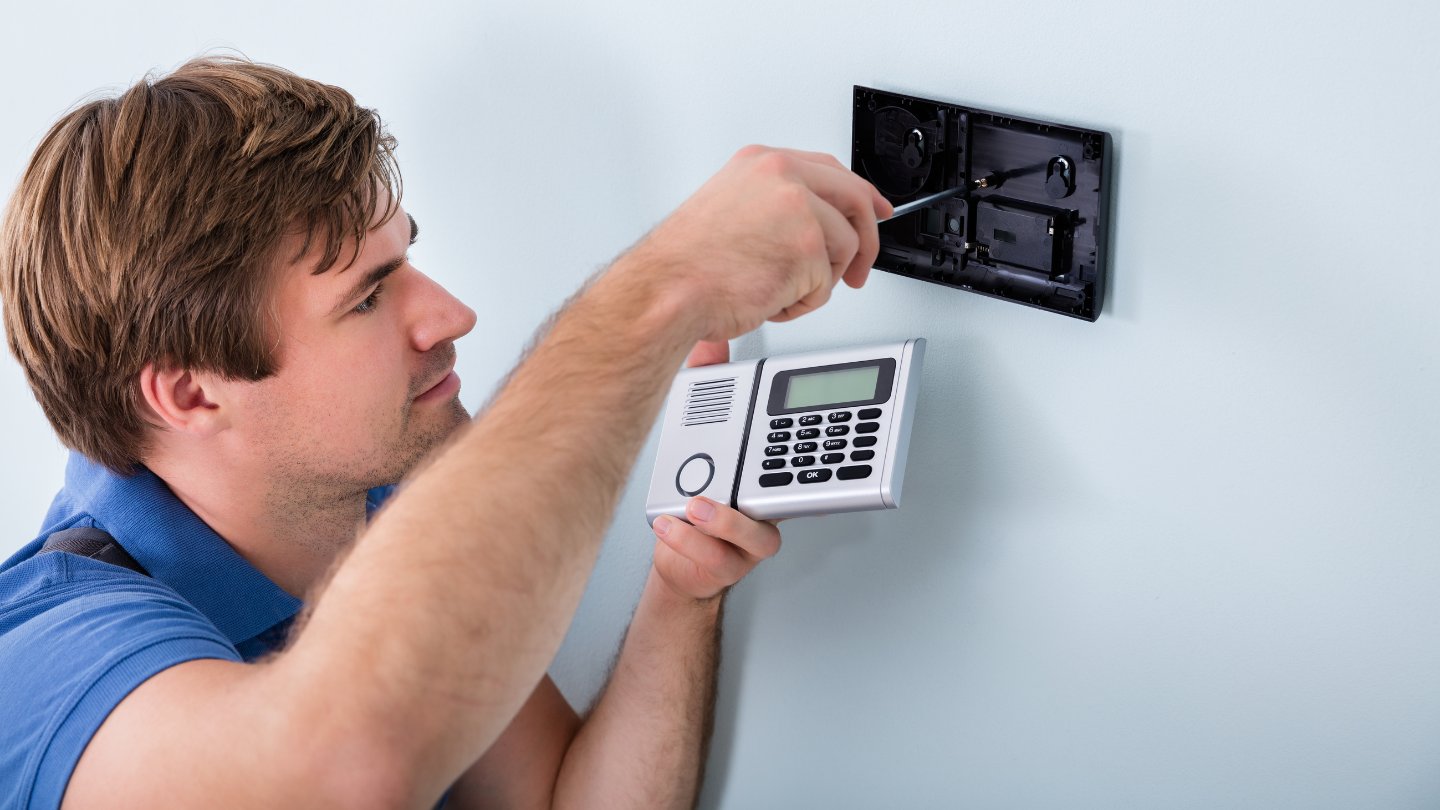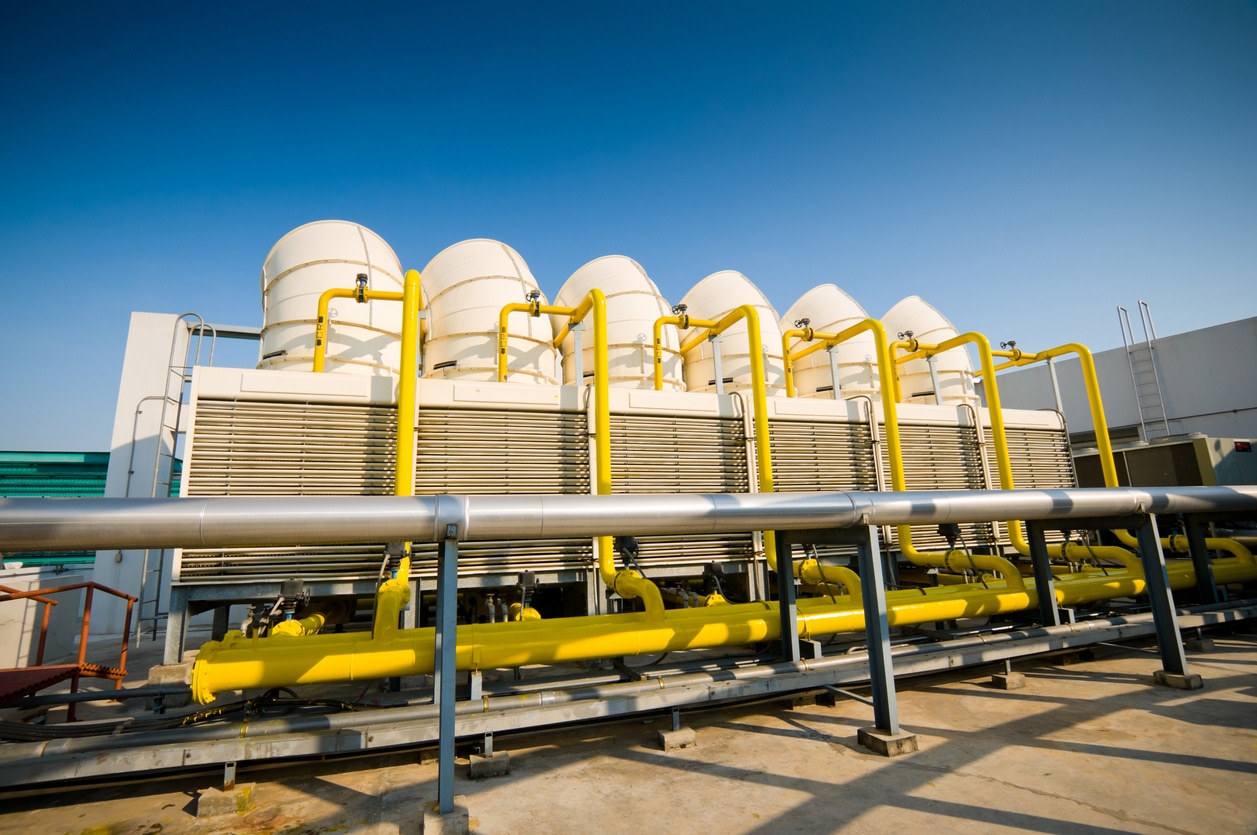Home>Home Security and Surveillance>How Do School Alarm Systems Work
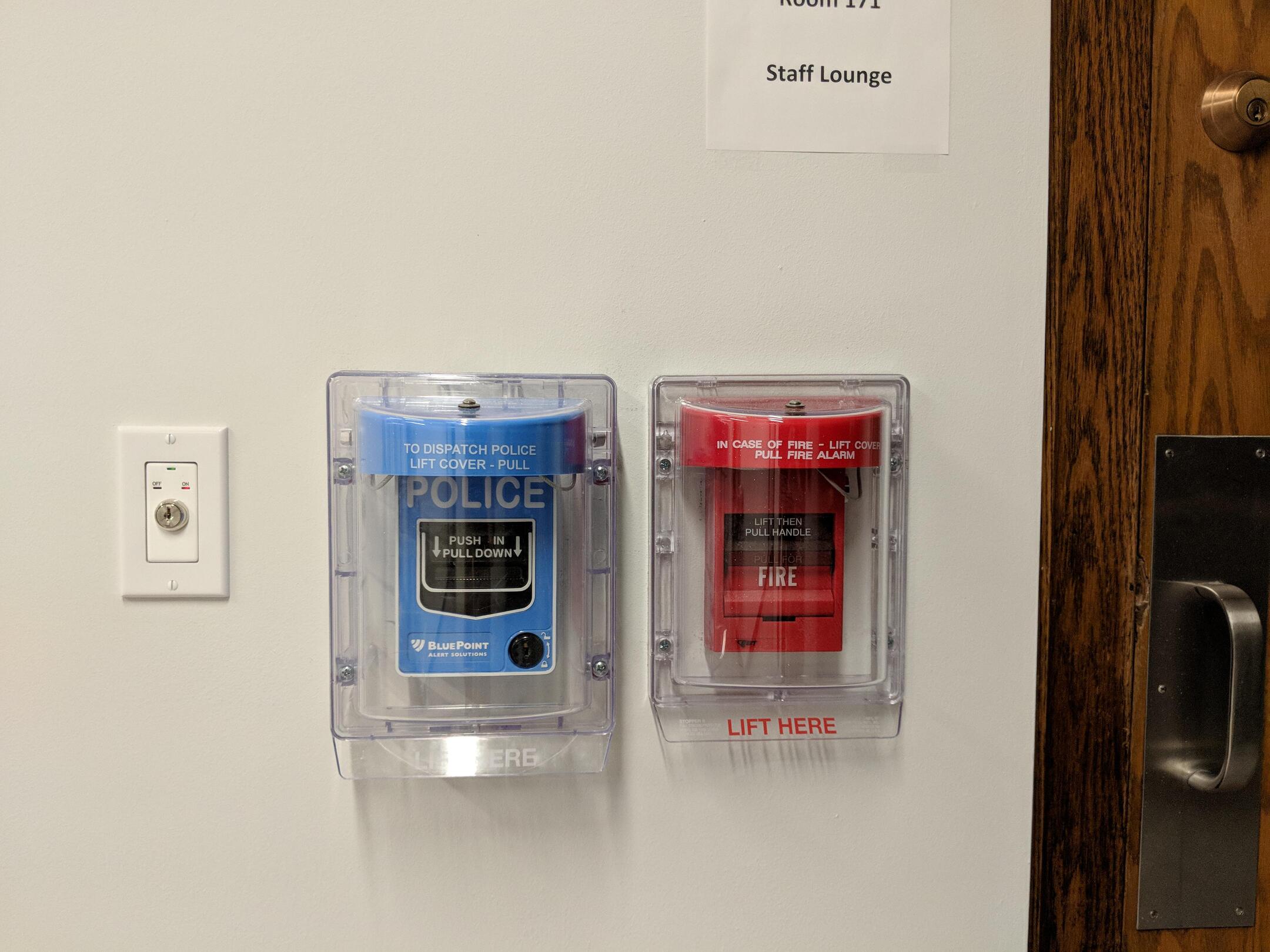

Home Security and Surveillance
How Do School Alarm Systems Work
Modified: March 6, 2024
Discover how school alarm systems work and ensure the safety of students and staff. Explore the benefits of home security and surveillance systems for educational institutions.
(Many of the links in this article redirect to a specific reviewed product. Your purchase of these products through affiliate links helps to generate commission for Storables.com, at no extra cost. Learn more)
Introduction
Welcome to the world of school alarm systems! In an era where safety and security have become paramount concerns in educational institutions, these sophisticated systems play a crucial role in ensuring the well-being of students, staff, and visitors. School alarm systems are designed to detect potential threats, such as fires, intruders, or other emergencies, and promptly alert the necessary authorities and occupants to take appropriate action.
With advances in technology, modern school alarm systems have evolved to be more efficient, intelligent, and integrated. They are capable of providing comprehensive coverage and monitoring across various areas of the school campus, helping to minimize response times and mitigate potential risks.
In this article, we will explore the key components that make up school alarm systems, delve into the mechanisms behind their activation and triggering, discuss the alerting and notification systems utilized, examine emergency response protocols, and explore the importance of monitoring and maintenance. By understanding how these systems work, you will gain valuable insights into the role they play in ensuring the safety and security of our educational facilities.
So, grab your seats, and let’s dive into the fascinating world of school alarm systems!
Key Takeaways:
- School alarm systems are like superheroes, always watching and listening for danger. They use sensors, control panels, and alerting devices to keep students and staff safe from fires, intruders, and other emergencies.
- School alarm systems are like a safety net, ready to catch any potential threats and quickly alert the right people. They help schools stay prepared, protect lives and property, and give everyone peace of mind.
Read more: How Do Alarm Systems Work?
School Alarm Systems: An Overview
School alarm systems are comprehensive security systems designed to protect educational institutions from various threats. These systems are specifically tailored to meet the unique safety requirements of schools, ensuring a safe and secure learning environment for students and staff.
Typically, a school alarm system consists of several interconnected components that work together to detect, alert, and respond to potential emergencies. These components include sensors, control panels, alerting devices, and communication systems.
The sensors are the primary detection devices in a school alarm system. They are strategically placed throughout the campus to monitor different areas for potential threats such as smoke, heat, motion, or unauthorized access. Smoke detectors, heat sensors, and motion detectors are commonly utilized to detect the presence of fire, high temperatures, or intruders respectively.
These sensors are connected to a centralized control panel, which serves as the brains of the alarm system. The control panel receives signals from the sensors and processes the information to determine the appropriate response. It is programmed to differentiate between normal activities and potential emergencies, ensuring accurate and timely detection.
When a threat is detected, the school alarm system activates the alerting devices to notify occupants and authorities. Common alerting devices include sirens, strobe lights, and voice evacuation systems. These devices are strategically placed throughout the campus to ensure that alarms can be heard and seen from all areas. The combination of audible and visual alerts helps to quickly and effectively communicate the presence of an emergency.
In addition to the alerting devices, school alarm systems also utilize communication systems to relay emergency information to the appropriate authorities. These systems may include intercoms, two-way radios, or automated messaging systems. By providing direct communication channels, emergency responders can be informed of the situation in real-time and take necessary actions.
Overall, school alarm systems are designed to provide a layered approach to security, ensuring that potential threats are detected early, and appropriate actions are taken promptly. By integrating various components and technologies, these systems offer comprehensive and reliable protection, giving school administrators and staff peace of mind.
In the following sections, we will explore the specific components of school alarm systems in more detail, uncover the activation and triggering mechanisms, discuss the alerting and notification systems utilized, examine emergency response protocols, and emphasize the importance of monitoring and maintaining these systems.
Components of School Alarm Systems
School alarm systems consist of various interconnected components that work together to ensure the safety and security of educational institutions. Understanding these components is essential in comprehending how these systems function. Let’s take a closer look at each component:
- Sensors: Sensors are the eyes and ears of the alarm system. They are strategically placed throughout the school campus to detect potential threats. Common types of sensors used in school alarm systems include smoke detectors, heat sensors, motion detectors, door and window sensors, and glass break sensors. These sensors actively monitor their respective areas and send signals to the central control panel when they detect abnormal activities or potential dangers.
- Control Panel: The control panel serves as the brain of the school alarm system. It receives signals from the sensors and processes the information to determine the appropriate response. The control panel is typically located in a secure area, such as the school’s administrative office. It is programmable and can be customized to meet the specific needs of the school. The control panel also allows for remote monitoring and control of the system.
- Alerting Devices: Alerting devices are responsible for notifying occupants and authorities about potential emergencies. They include various types of audible and visual alert systems. Common alerting devices used in school alarm systems include sirens, strobe lights, horns, and voice evacuation systems. These devices are strategically placed throughout the campus to ensure that alarms can be heard and seen from all areas, effectively alerting people to take appropriate action.
- Communication Systems: Communication systems play a vital role in school alarm systems. They enable direct communication between the school and emergency responders. Examples of communication systems used in schools include intercoms, two-way radios, and automated messaging systems. These systems allow for immediate communication with authorities, providing real-time information about the emergency situation so that the appropriate response can be initiated promptly.
- Access Control Systems: Access control systems restrict unauthorized entry into the school premises. These systems utilize technologies such as key cards, PIN codes, or biometric authentication to control access to certain areas of the campus. They play a significant role in enhancing security by preventing unauthorized individuals from entering restricted areas.
- Video Surveillance Systems: Video surveillance systems, commonly known as CCTV (Closed-Circuit Television), are crucial components of school alarm systems. They provide monitoring and recording of activities within and around the school campus. Surveillance cameras are strategically placed in key areas to deter criminal activities, identify potential threats, and assist in investigations if an incident occurs.
By integrating these components into a cohesive system, school alarm systems offer comprehensive protection and enhance the overall safety and security of educational institutions. In the next section, we will explore the mechanisms behind the activation and triggering of these alarm systems.
Activation and Triggering Mechanisms
Activation and triggering mechanisms form a vital part of school alarm systems. These mechanisms are responsible for detecting potential threats and initiating the appropriate response. Let’s explore how these systems work:
1. Sensor Detection: The activation process begins with the sensors detecting abnormal events or potential dangers. For example, smoke detectors will sense the presence of smoke, motion detectors will detect unauthorized movement, and glass break sensors will pick up the sound of breaking glass. When a sensor is triggered, it sends a signal to the central control panel.
2. Central Control Panel: The central control panel receives the signals from the sensors and processes the information. It is equipped with sophisticated algorithms that analyze the data and determine whether it is a genuine threat or a false alarm. The control panel is programmed with specific thresholds and criteria to differentiate between normal activities and potential emergencies.
3. Verification and Confirmation: In order to reduce false alarms, many modern alarm systems employ verification and confirmation mechanisms. For example, if a motion sensor is triggered, it may require multiple sensors in the area to be triggered within a certain timeframe for the alarm to be activated. This helps to eliminate false alarms caused by random movements or animals.
4. Alarm Activation: Once the control panel confirms that a genuine threat exists, it activates the alarm system. Alerting devices such as sirens, strobe lights, and voice evacuation systems are triggered, producing audible and visual alerts throughout the school campus. The purpose of these alerts is to immediately notify occupants and authorities about the potential emergency.
5. Communication with Authorities: Simultaneously with the alarm activation, the control panel initiates communication with relevant authorities, such as the local fire department or law enforcement agencies. This is typically done through communication systems like two-way radios or automated messaging systems. Direct communication with the authorities helps to provide immediate information about the nature and location of the emergency, enabling them to respond quickly and efficiently.
6. Evacuation and Safety Procedures: Upon receiving the alarm, the school’s emergency response plan is set into motion. This plan includes predefined procedures for evacuation, safe assembly points, and other necessary actions. Teachers and staff are trained to follow these procedures and guide students to safety. The clear, audible instructions provided by the alarm system facilitate swift and orderly evacuations.
By employing sophisticated activation and triggering mechanisms, school alarm systems ensure that potential threats are detected promptly and appropriate actions are taken. In the next section, we will explore the alerting and notification systems used in school alarm systems.
Alerting and Notification Systems
Alerting and notification systems are essential components of school alarm systems. These systems play a critical role in quickly and effectively communicating the presence of an emergency to the school’s occupants and relevant authorities. Let’s explore the various alerting and notification systems commonly used:
1. Audible Alarms: Audible alarms are designed to generate loud and distinct sounds that can be easily heard throughout the school campus. These alarms alert students, staff, and visitors to a potential emergency. Common audible alarm devices include sirens, horns, and bells. The loud and attention-grabbing nature of these alarms ensures that occupants are aware of the situation and can take appropriate actions.
2. Visual Alerts: Visual alerts are visual cues, typically in the form of strobe lights or flashing lights, that accompany the audible alarms. These lights provide a visual indication of the emergency, ensuring that individuals who may have hearing impairments or are in noisy environments can still be made aware of the situation. Visual alerts are particularly important in ensuring equal access to emergency information for all individuals in the school community.
3. Voice Evacuation Systems: Voice evacuation systems utilize pre-recorded or live announcements to provide clear and concise instructions to occupants during an emergency. These systems can deliver messages specific to the situation, such as a fire or an intruder. By providing real-time information and guidance, voice evacuation systems help to maintain calm and facilitate orderly evacuations.
4. Digital Signage and Message Boards: Digital signage and message boards are informational displays placed strategically throughout the school campus. These displays can be used to provide real-time updates and emergency notifications. Messages can include information about the type of emergency, evacuation routes, assembly points, and other essential instructions. Digital signage and message boards are highly visible and can be easily updated, ensuring that occupants receive crucial information in a timely manner.
5. Mobile Alerts and Notifications: Many school alarm systems now integrate with mobile alerting systems, allowing parents, guardians, and staff to receive immediate notifications and updates about emergencies. These alerts can be sent via smartphone apps, text messages, or email. Mobile notifications provide an additional layer of communication and ensure that individuals outside of the immediate school vicinity are also informed about the situation.
6. Intercom Systems: Intercom systems allow for direct communication between school personnel and occupants during an emergency. These systems enable officials to provide real-time instructions and updates to specific areas or classrooms. Intercom systems also allow two-way communication, enabling occupants to communicate their status or request assistance if needed.
Effective alerting and notification systems are crucial in ensuring a coordinated and swift response to emergencies. By utilizing audible, visual, and voice-based communication methods, school alarm systems can effectively convey critical information to occupants, helping to facilitate safe and orderly evacuations and minimizing potential risks.
In the next section, we will dive into the emergency response protocols commonly implemented in school alarm systems.
School alarm systems work by using sensors to detect unauthorized entry, fire, or other emergencies. When a sensor is triggered, the system sends a signal to a control panel, which then activates alarms and notifies authorities. Regular maintenance and testing are important to ensure the system functions properly.
Read more: How Do Fire Alarm Systems Work
Emergency Response Protocols
Having robust emergency response protocols is crucial in ensuring the swift and effective response to emergencies in schools. These protocols provide a clear and organized framework for students, staff, and emergency responders to follow. Let’s explore some common emergency response protocols implemented in school alarm systems:
1. Emergency Action Plan: Every school should have an emergency action plan in place. This plan outlines the procedures to be followed in various emergency situations, including fires, natural disasters, intruders, and medical emergencies. It includes evacuation routes, assembly points, designated roles and responsibilities for staff members, and methods of communication with emergency services.
2. Evacuation Procedures: Evacuation procedures are an integral part of emergency response protocols. When an alarm is activated, students and staff should be trained to immediately evacuate the building using predetermined evacuation routes. The evacuation routes should be clearly marked and regularly practiced to ensure familiarity and efficiency in case of an emergency.
3. Shelter-in-Place: In certain situations, such as severe weather or external threats, it may be safer for occupants to remain indoors. Shelter-in-place protocols provide instructions for students and staff to seek refuge in designated interior areas, away from windows and exterior doors. These areas should be reinforced to provide additional protection.
4. Lockdown Procedures: Lockdown procedures are implemented in response to a threat inside or in close proximity to the school. In such situations, students and staff are trained to quickly secure classrooms and offices, turn off lights, close blinds, and remain quiet and hidden until further instructions are provided. Lockdown drills should be conducted regularly to ensure readiness in an actual emergency.
5. Communication Protocols: Clear and effective communication is essential during emergencies. Schools should establish communication protocols for contacting emergency services, notifying parents and guardians, and providing updates to staff, students, and the community. This may include utilizing two-way radios, intercom systems, automated messaging systems, and mobile alerts.
6. Training and Drills: Regular training sessions and drills are essential to familiarize staff and students with emergency response protocols. These drills simulate different emergency scenarios and allow individuals to practice their roles and responsibilities. Training should include proper evacuation techniques, first aid, and the use of emergency equipment such as fire extinguishers.
7. Collaboration with Emergency Responders: Schools should establish relationships with local emergency responders, such as fire departments, police departments, and medical services. Collaborating with these agencies ensures that they are familiar with the school’s layout, emergency procedures, and can respond effectively in case of an emergency.
By implementing and regularly reviewing these emergency response protocols, schools can minimize risks, enhance the safety of students and staff, and ensure a coordinated and effective response to emergencies. In the next section, we will explore the importance of monitoring and maintaining school alarm systems.
Monitoring and Maintenance of School Alarm Systems
Monitoring and maintenance are vital aspects of ensuring the reliability and effectiveness of school alarm systems. Proper monitoring and regular maintenance help to detect any issues or malfunctions, ensure optimal performance, and provide a proactive approach to security. Let’s dive into the importance of monitoring and maintaining school alarm systems:
1. Monitoring: Monitoring involves constant surveillance and oversight of the school alarm system. This can be done through a central monitoring station or by school staff trained in monitoring procedures. Monitoring allows for immediate detection of any abnormalities or triggering of alarms, ensuring that potential threats are promptly identified and addressed.
2. Regular Inspections: Regular inspections of the alarm system components are crucial to identify any signs of wear and tear, damage, or malfunction. These inspections should cover sensors, alerting devices, control panels, communication systems, and other system components. Inspections can be performed by in-house staff or by professional technicians to ensure that the system is functioning optimally.
3. Testing and Maintenance: Routine testing and maintenance activities are essential to verify the functionality of the alarm system. Regular testing involves simulating alarm triggers to ensure that the sensors, control panels, and alerting devices are working correctly and communicating effectively. Maintenance activities may include cleaning sensors, replacing batteries, updating software, and addressing any identified issues promptly.
4. Upgrades and Technology Advancements: As technology continues to evolve, it is essential to keep school alarm systems up to date with the latest advancements. Regular assessment of the system’s capabilities and considering upgrades as necessary help ensure that the school is benefiting from the most reliable and efficient security technology available. This may involve integrating new sensors, advanced control panel features, or implementing enhanced communication systems.
5. Staff Training: Proper training of school staff on alarm system operation, emergency response protocols, and maintenance procedures is crucial. Staff members should be familiar with the system’s functions, understand how to interpret and respond to alarms appropriately, and have the skills to perform basic troubleshooting and maintenance tasks. Ongoing training ensures that the system is utilized to its full potential and that staff members can respond effectively during emergencies.
6. Collaboration with Security Professionals: Seeking assistance from security professionals, such as alarm system vendors, integrators, or security consultants, can provide valuable insights and expertise in monitoring and maintaining school alarm systems. These professionals can conduct regular system audits, offer recommendations for improvements, and provide guidance on best practices for system performance and security.
By prioritizing monitoring and maintenance efforts, schools can ensure the longevity and reliability of their alarm systems. These measures contribute to a safer learning environment, enhance emergency response capabilities, and provide peace of mind to students, staff, and parents. In the concluding section, we will summarize the importance of school alarm systems in safeguarding educational institutions.
Importance of School Alarm Systems
School alarm systems play a critical role in safeguarding educational institutions and ensuring the safety and security of students, staff, and visitors. Let’s explore the importance of these systems:
1. Early Detection and Prompt Response: School alarm systems are designed to detect potential threats, such as fires, intruders, or other emergencies, at their early stages. By swiftly detecting these threats, the alarm system can initiate a prompt response, allowing for quick evacuation, notification of authorities, and implementation of emergency procedures.
2. Protection of Life and Property: The primary purpose of school alarm systems is to protect the lives of students, staff, and visitors. By detecting and alerting occupants to potential emergencies, these systems provide the opportunity to evacuate the premises safely and minimize the risk of injury or loss of life. They also safeguard school properties, reducing the potential for vandalism, theft, or other criminal activities.
3. Deterrence and Prevention: The presence of a comprehensive alarm system acts as a deterrent to potential intruders, vandals, and other criminals. Knowing that the school has a robust security system in place can discourage individuals from attempting to breach the premises or engage in illegal activities. Prevention is always preferable to dealing with the aftermath of an incident.
4. Improved Emergency Response: School alarm systems facilitate a more coordinated and efficient response during emergencies. By providing real-time alerts to emergency responders, such as fire departments or law enforcement agencies, these systems help ensure that the appropriate personnel are promptly notified and can initiate the necessary actions to mitigate the situation.
5. Peace of Mind: School alarm systems not only provide a safer environment for students, staff, and parents but also deliver peace of mind. Knowing that there are robust security measures in place gives stakeholders confidence that the school takes their safety and security seriously. This peace of mind promotes a positive learning environment where students can focus on their education without unnecessary worries.
6. Compliance with Regulations: School alarm systems are often a requirement to comply with local, state, and federal regulations. Educational institutions need to meet specific safety and security standards to ensure the well-being of their occupants. By implementing a reliable alarm system, schools can demonstrate their compliance with these regulations and confidently fulfill their duty of care.
Overall, school alarm systems are essential for maintaining the safety and security of educational institutions. They provide early detection, facilitate prompt response, protect lives and property, deter criminals, improve emergency response efforts, and provide peace of mind to the entire school community. Investing in a reliable and well-maintained alarm system is an investment in the well-being and success of students and staff.
As we conclude, it is vital for schools to regularly review, assess, and update their alarm systems to ensure they are aligned with the evolving security needs of educational environments.
Conclusion
School alarm systems are a crucial component in ensuring the safety and security of educational institutions. These comprehensive systems play a vital role in detecting potential threats, alerting occupants and authorities, and facilitating a prompt and coordinated response during emergencies. By integrating various components such as sensors, control panels, alerting devices, and communication systems, school alarm systems provide comprehensive protection and peace of mind to students, staff, and parents.
The components of school alarm systems work together harmoniously to detect, alert, and respond to potential emergencies. Sensors continuously monitor the environment for any abnormal activities, signaling the central control panel when a threat is detected. The control panel processes the information and triggers alarms and notifications through audible and visual alerting devices, such as sirens, strobe lights, and voice evacuation systems. Communication systems enable direct communication with relevant authorities, ensuring a swift and effective response.
Emergency response protocols, including evacuation procedures, shelter-in-place protocols, and lockdown procedures, are vital for guiding students, staff, and emergency responders during emergencies. Regular training, monitoring, and maintenance of school alarm systems help ensure their reliability and effectiveness. By collaborating with security professionals and integrating the latest advancements in technology, schools can stay at the forefront of security measures and enhance the safety of their educational environments.
The importance of school alarm systems cannot be overstated. These systems provide early detection, deterrence, and prevention of potential threats, facilitating a quick and appropriate response to emergencies. They protect lives and property, improve emergency response efforts, and provide peace of mind to students, staff, and parents. Moreover, compliance with regulations is essential in meeting the safety and security standards required for educational institutions.
In conclusion, investing in a reliable and properly maintained school alarm system is a crucial step in ensuring the well-being and success of students and staff. By prioritizing the safety and security of educational environments, schools can create a positive learning environment where everyone can thrive and focus on education with peace of mind.
Frequently Asked Questions about How Do School Alarm Systems Work
Was this page helpful?
At Storables.com, we guarantee accurate and reliable information. Our content, validated by Expert Board Contributors, is crafted following stringent Editorial Policies. We're committed to providing you with well-researched, expert-backed insights for all your informational needs.


